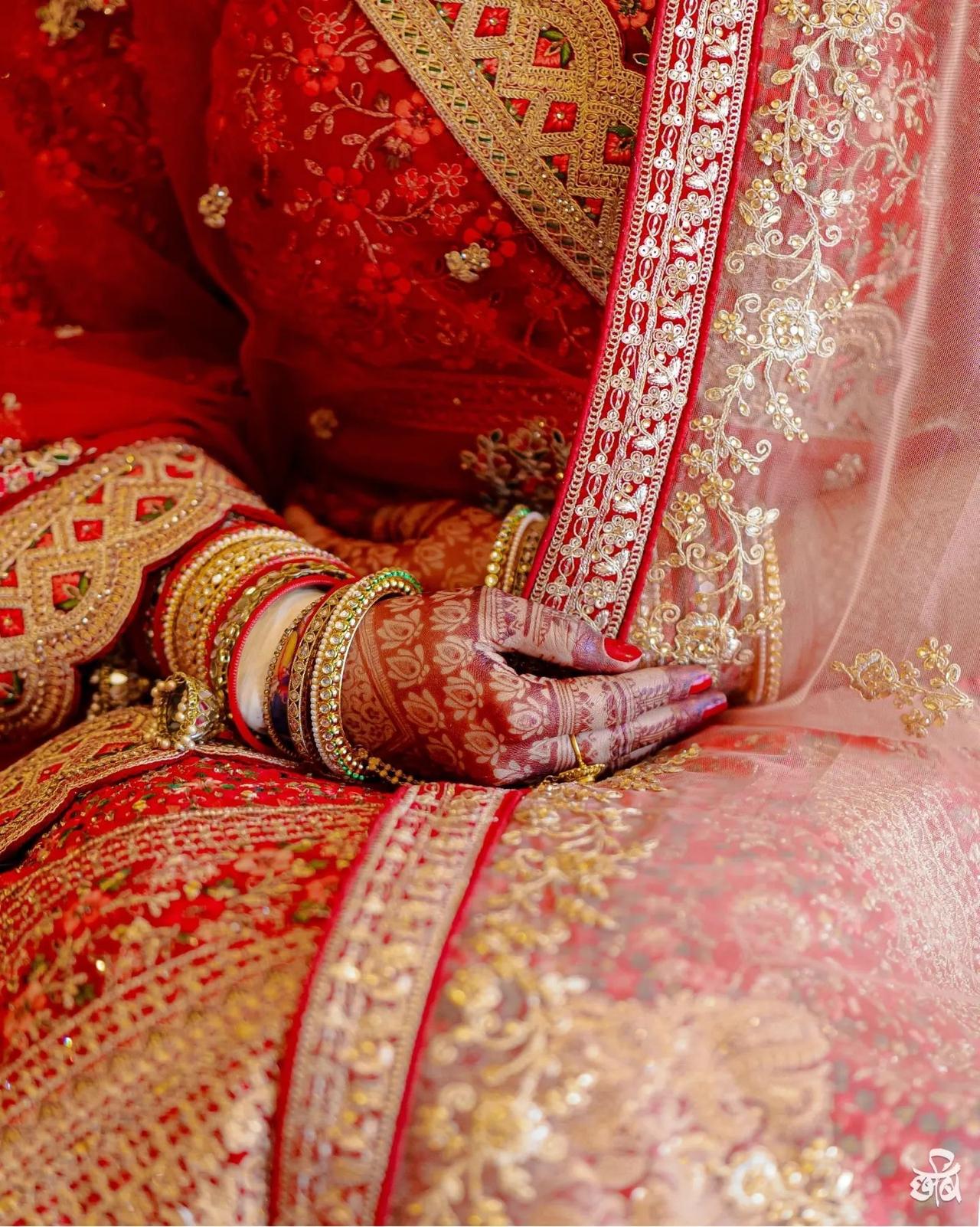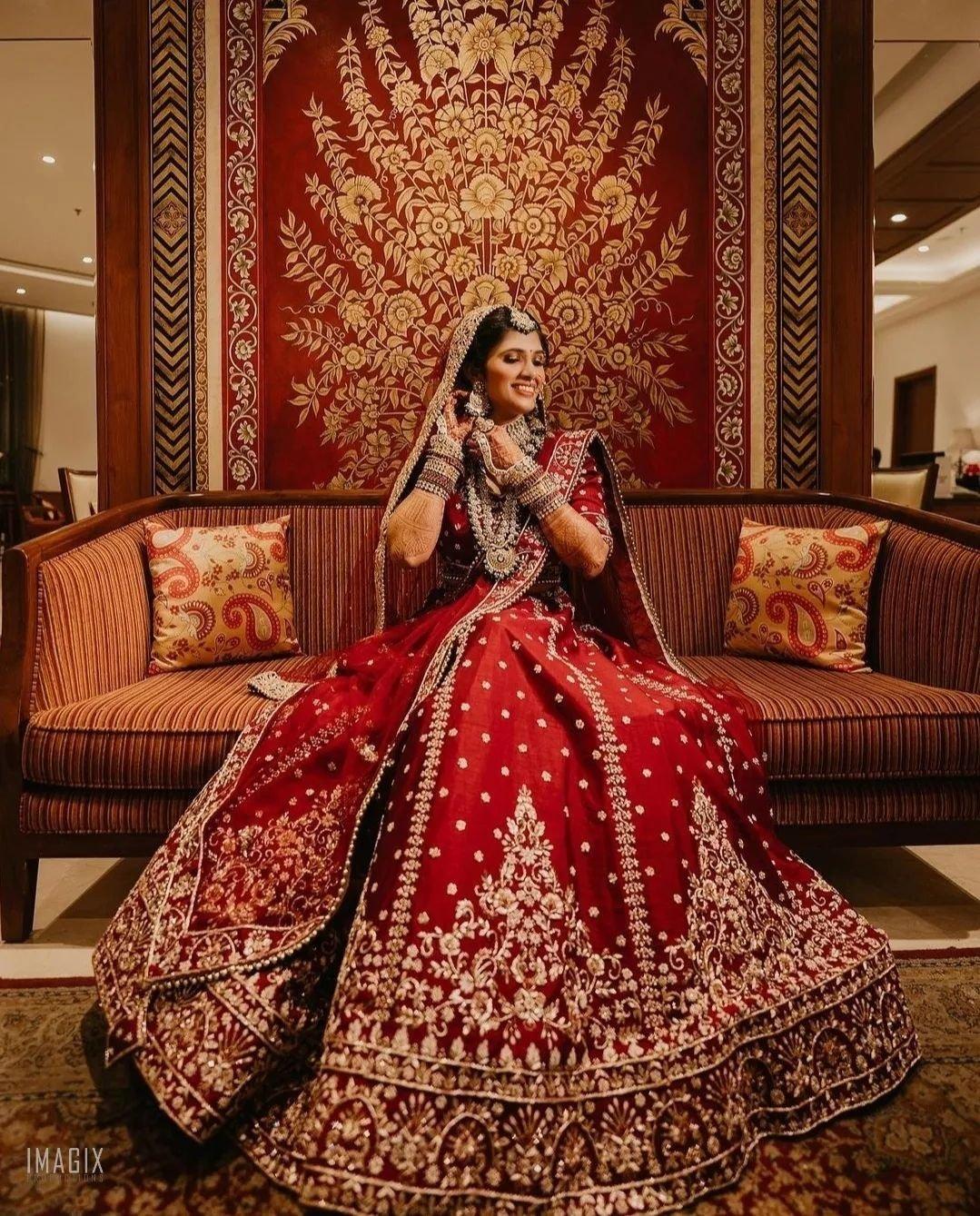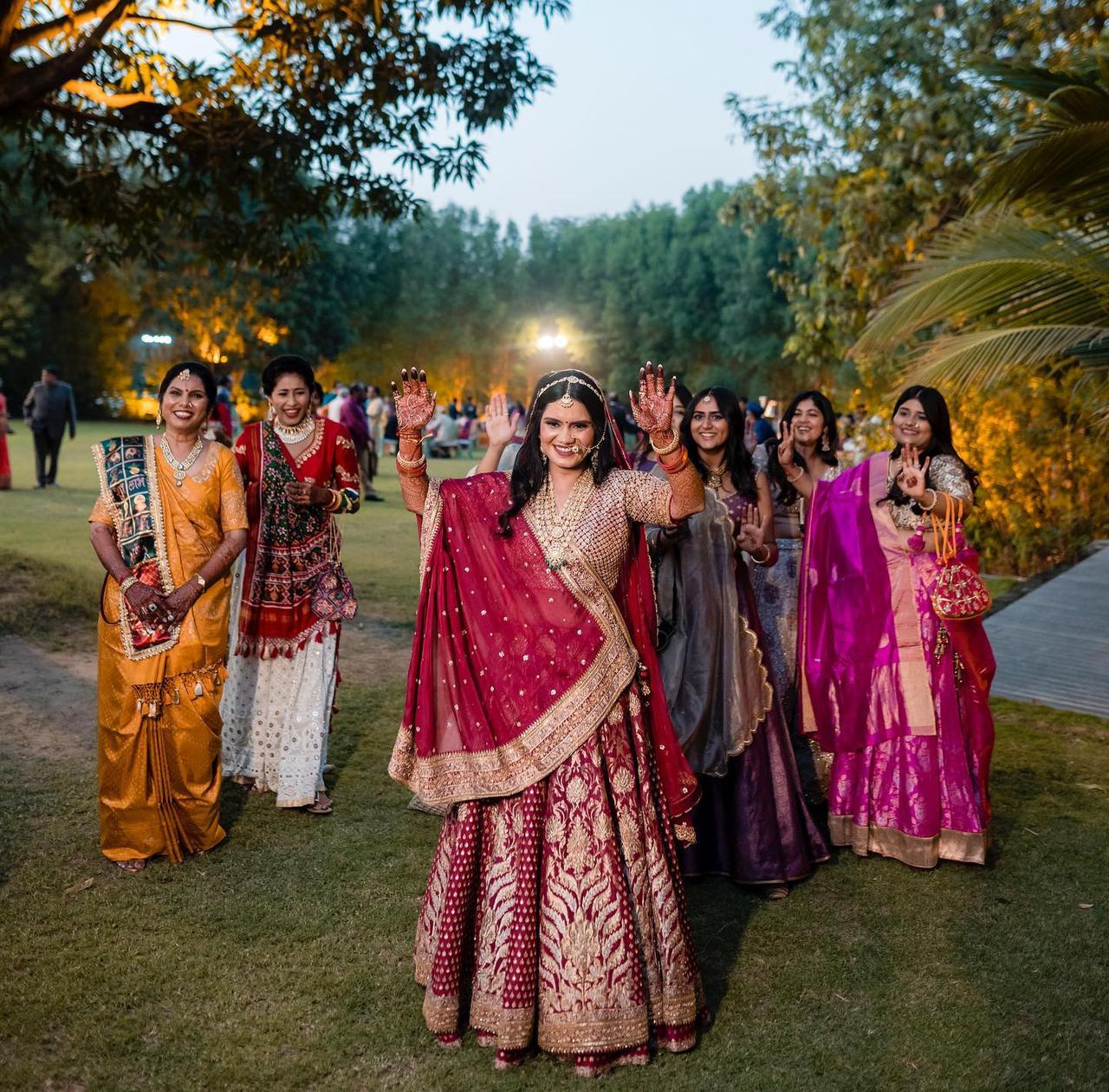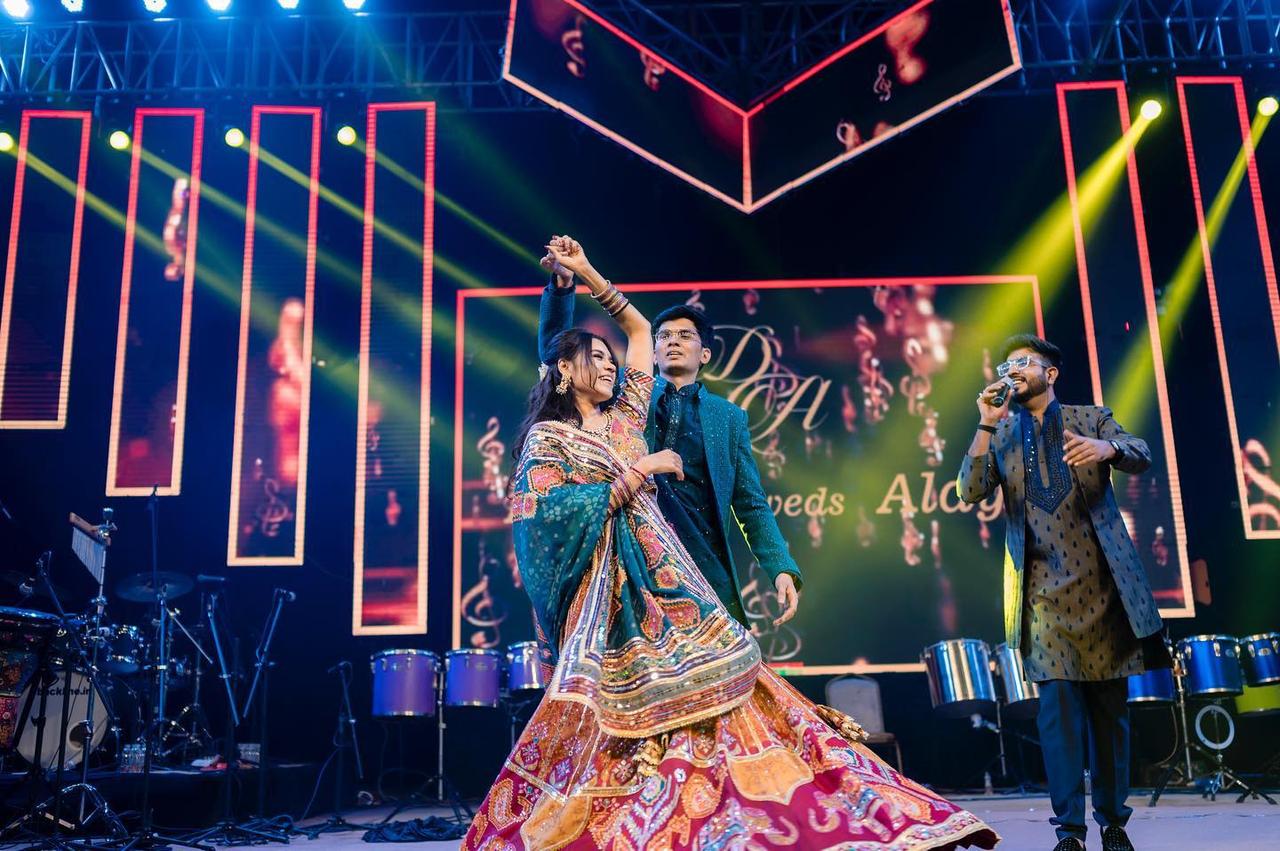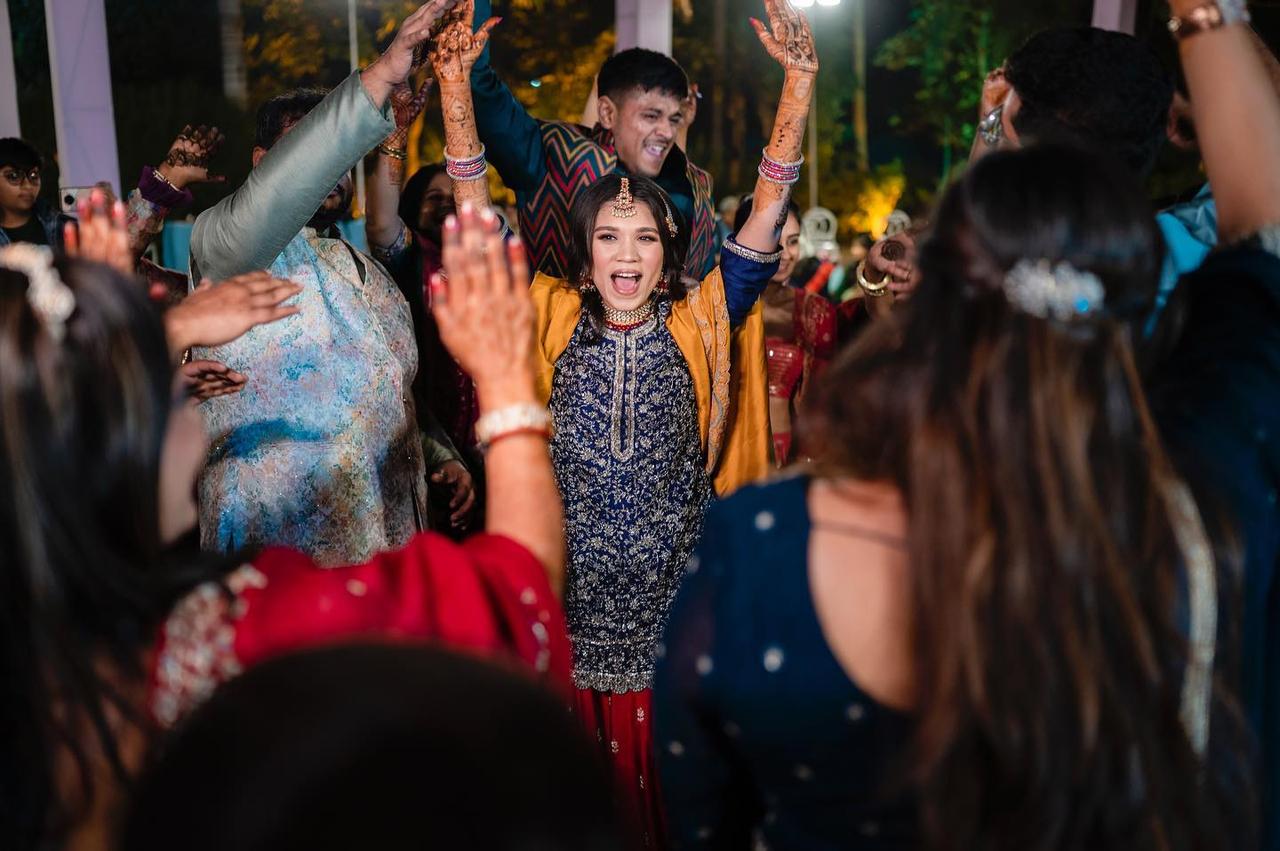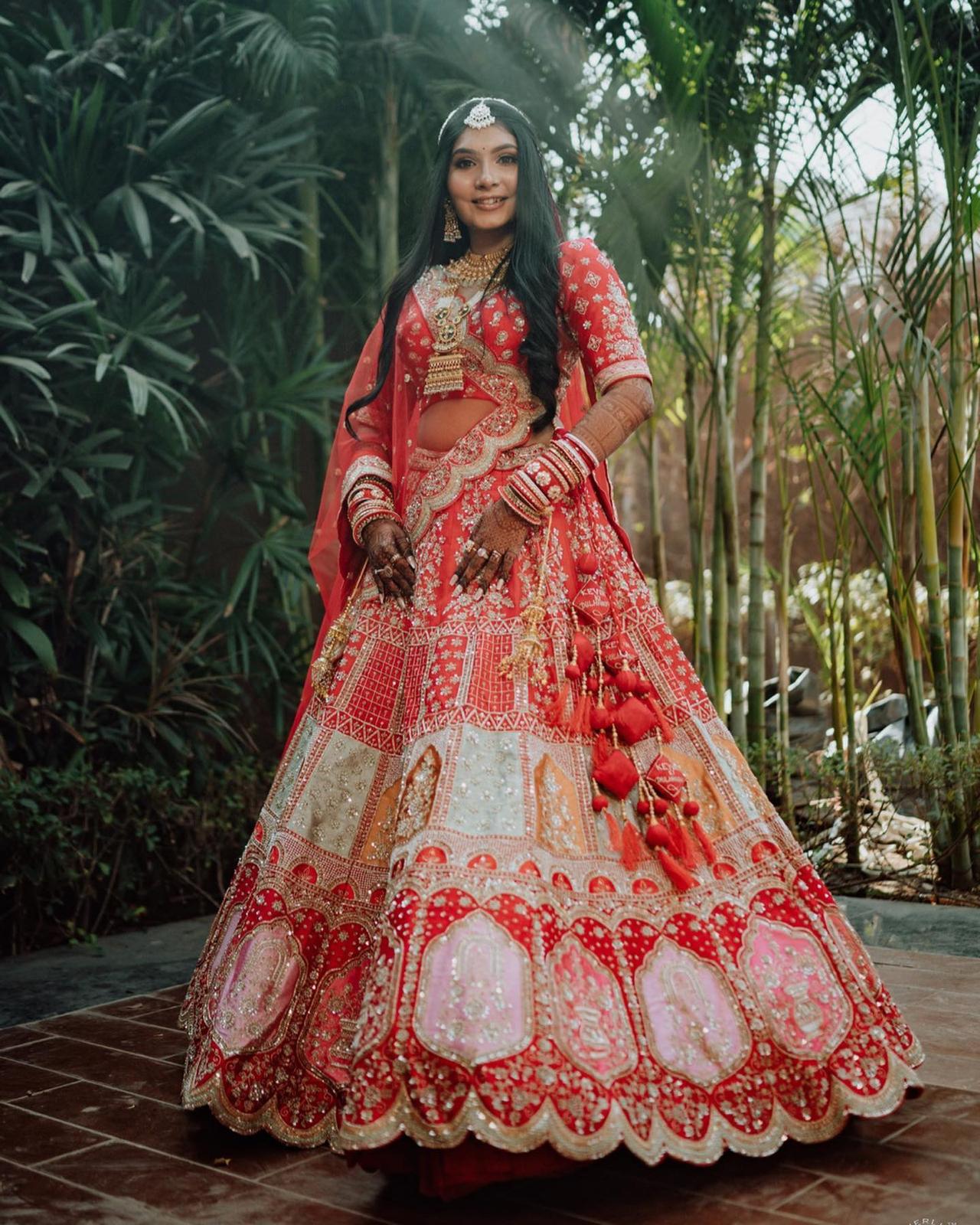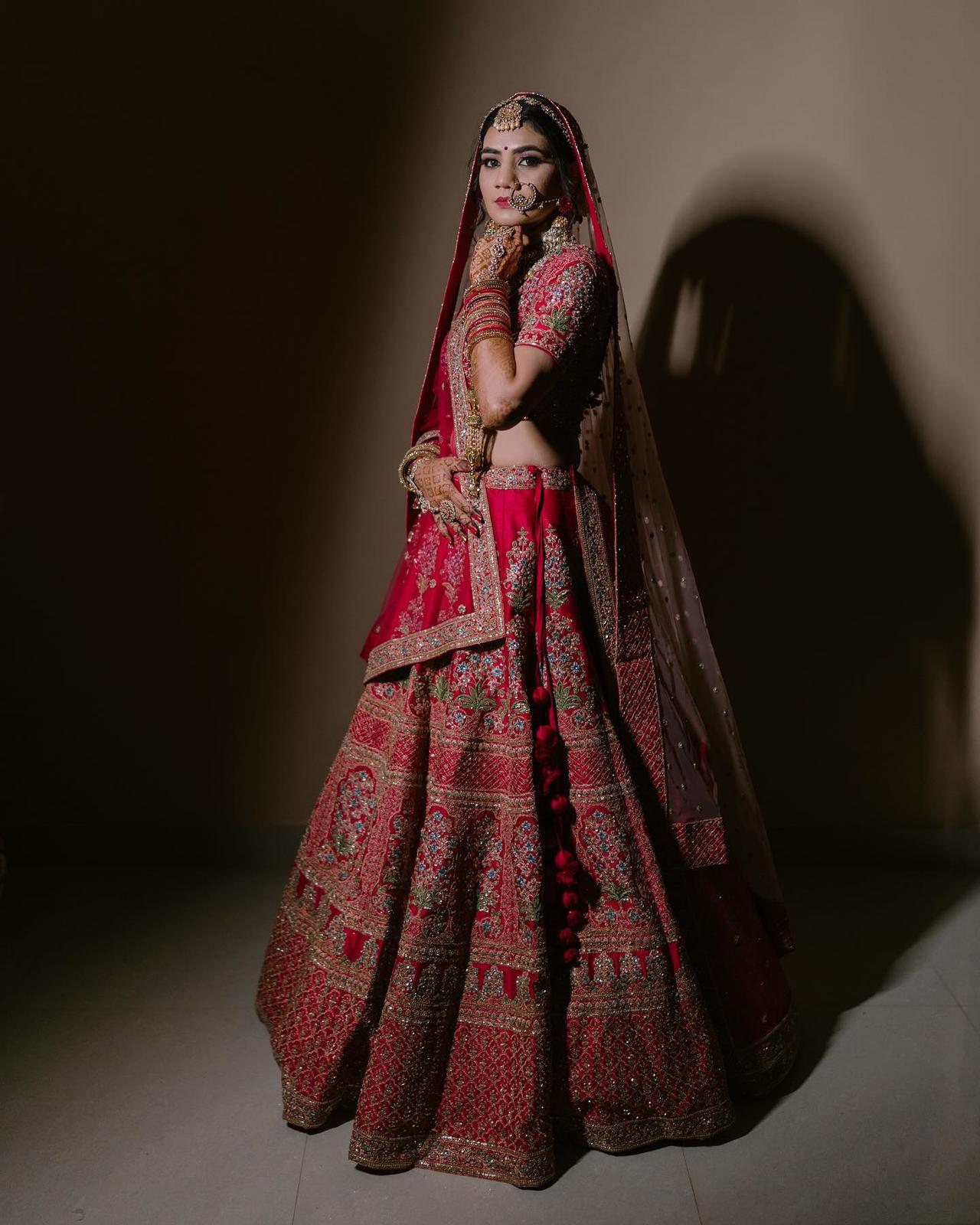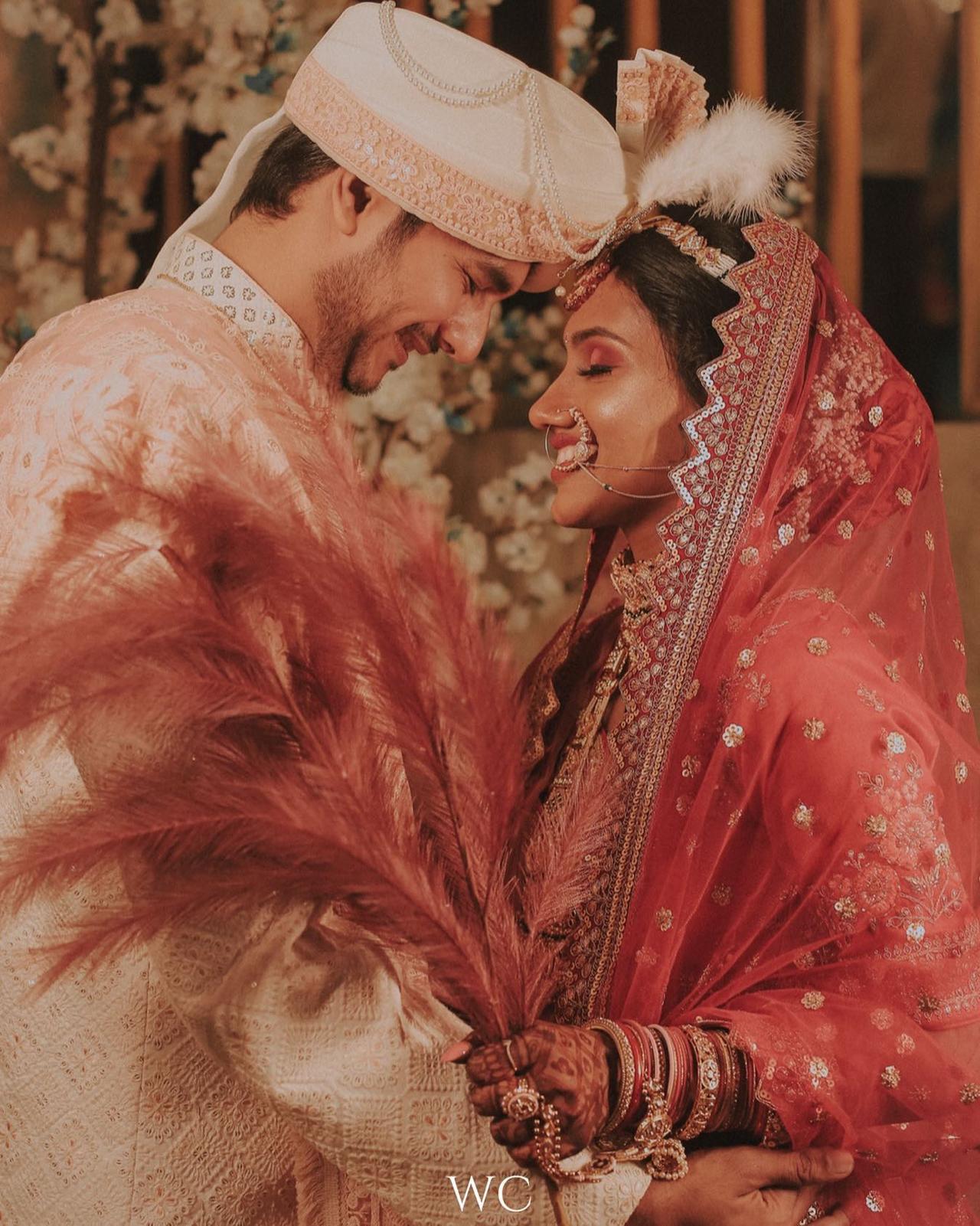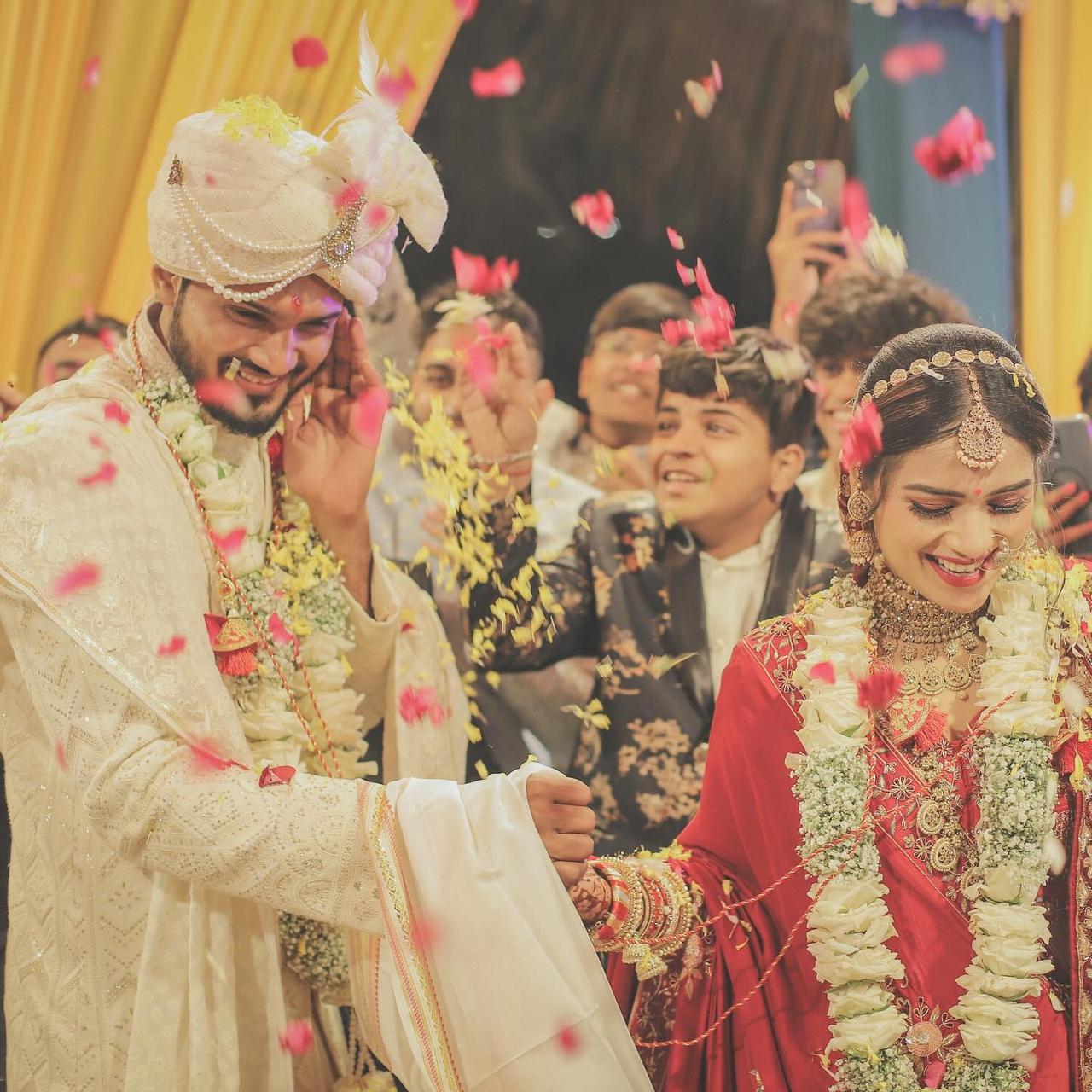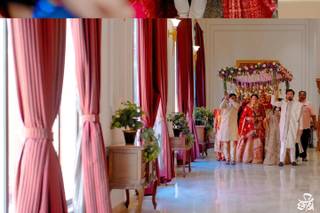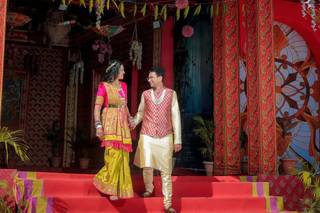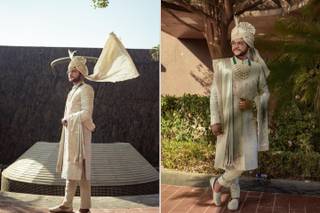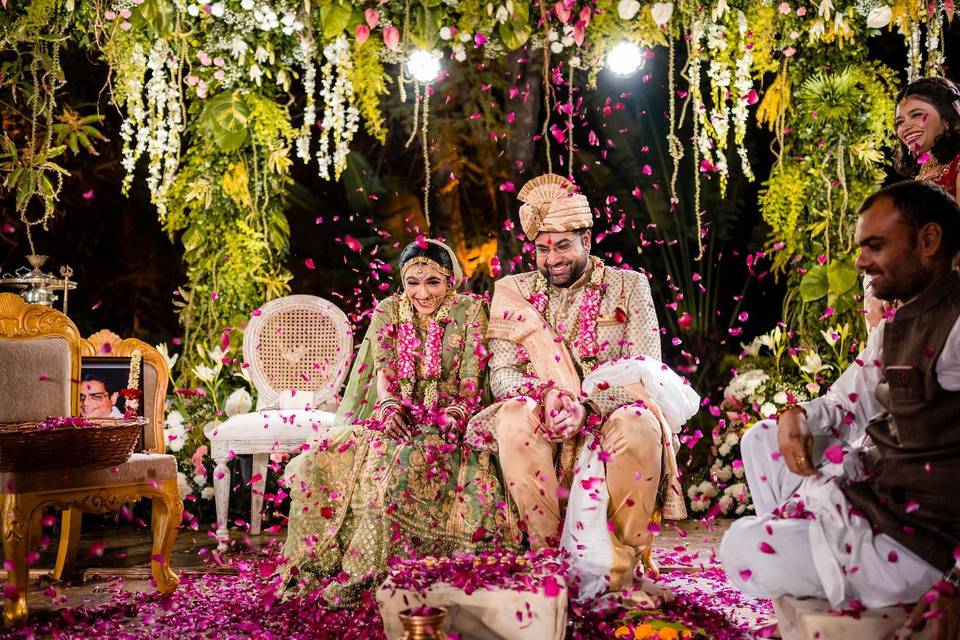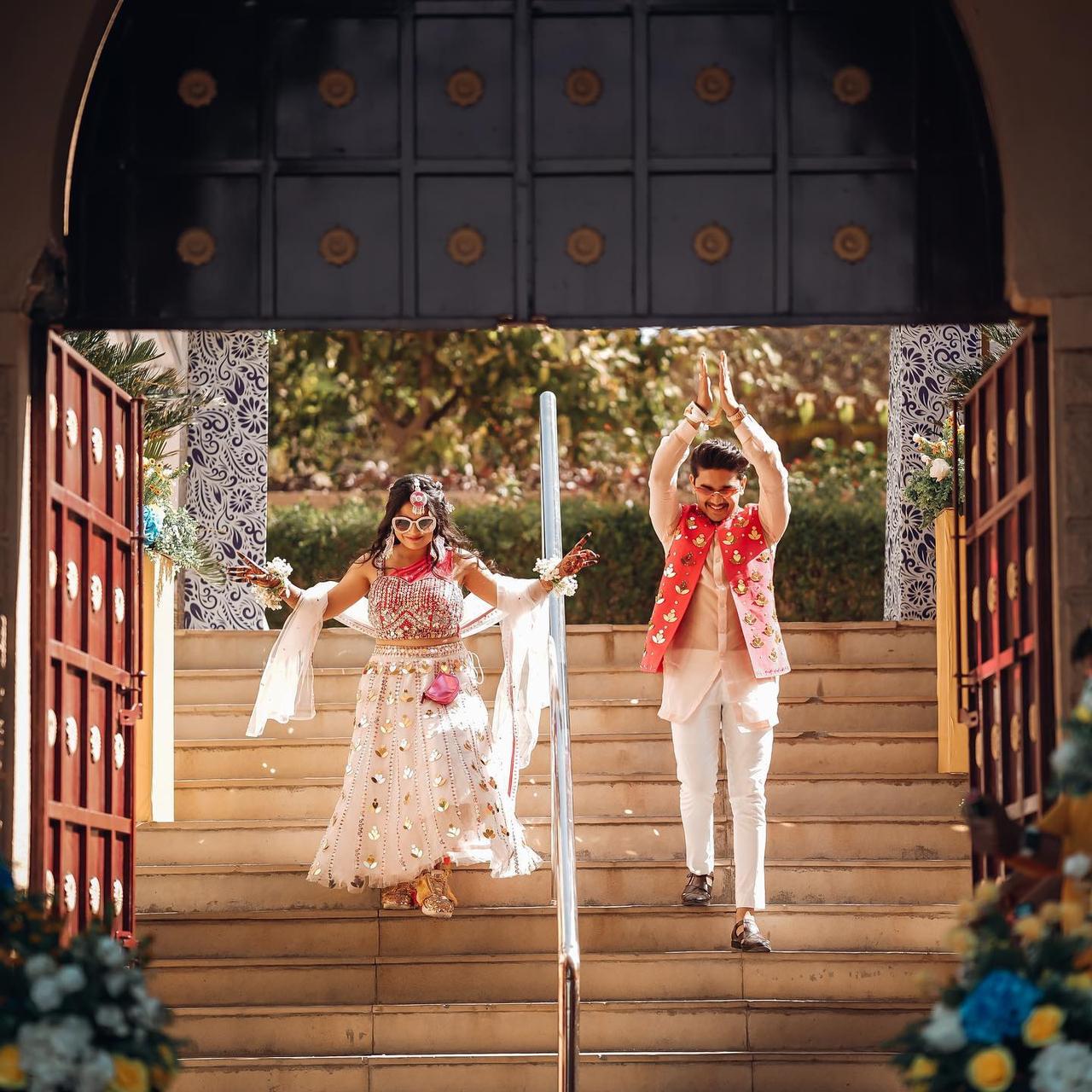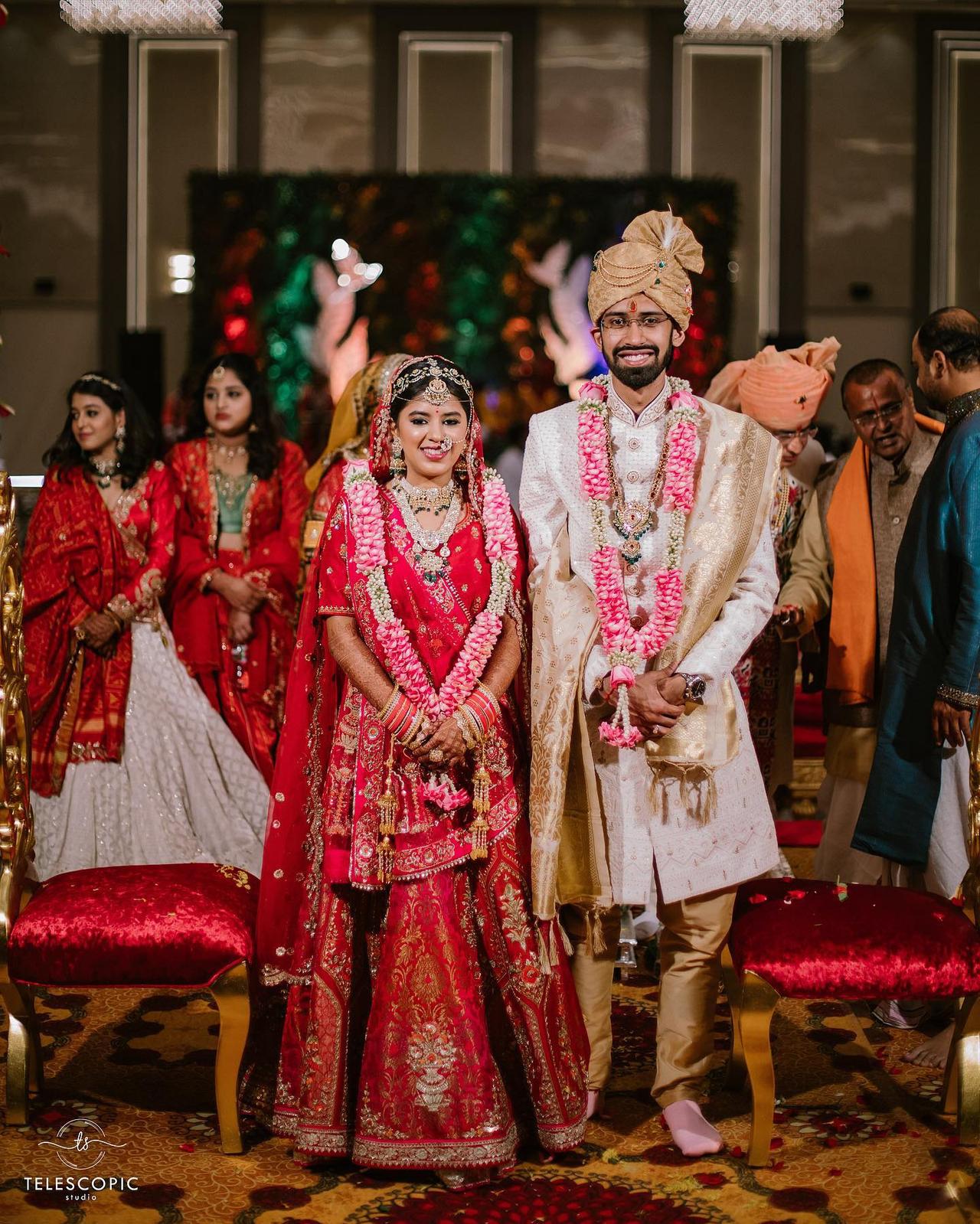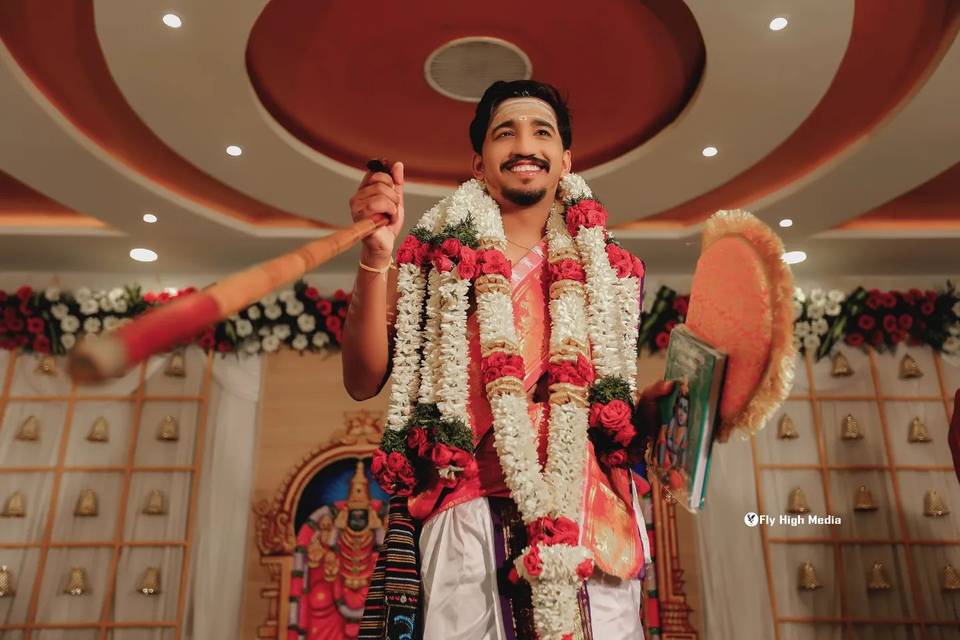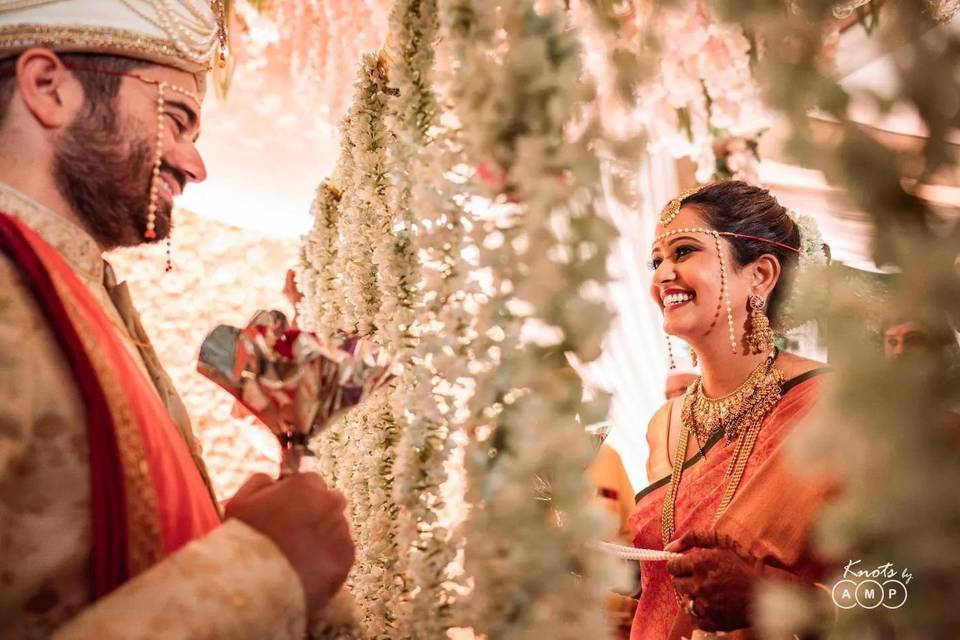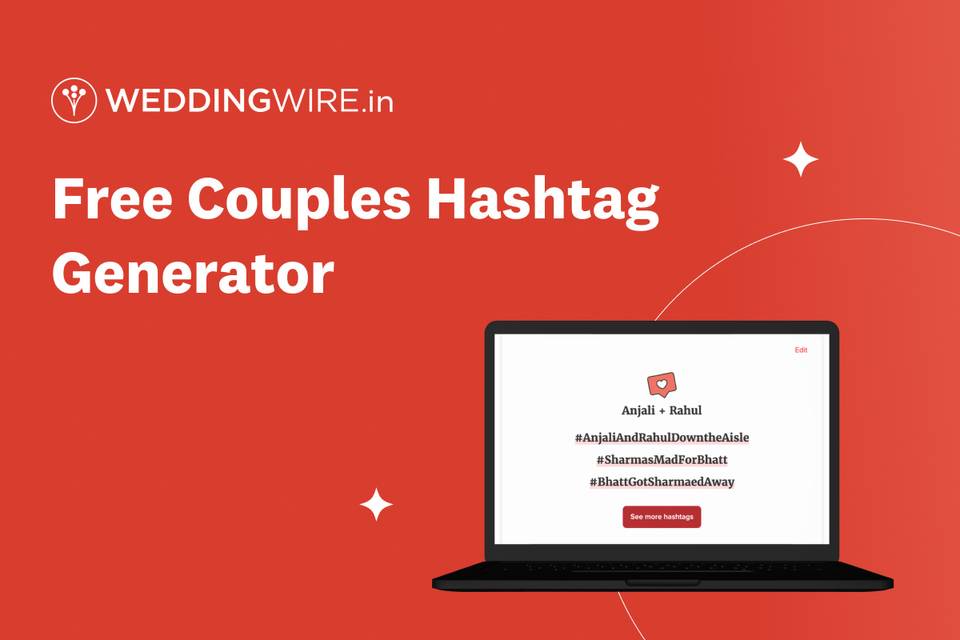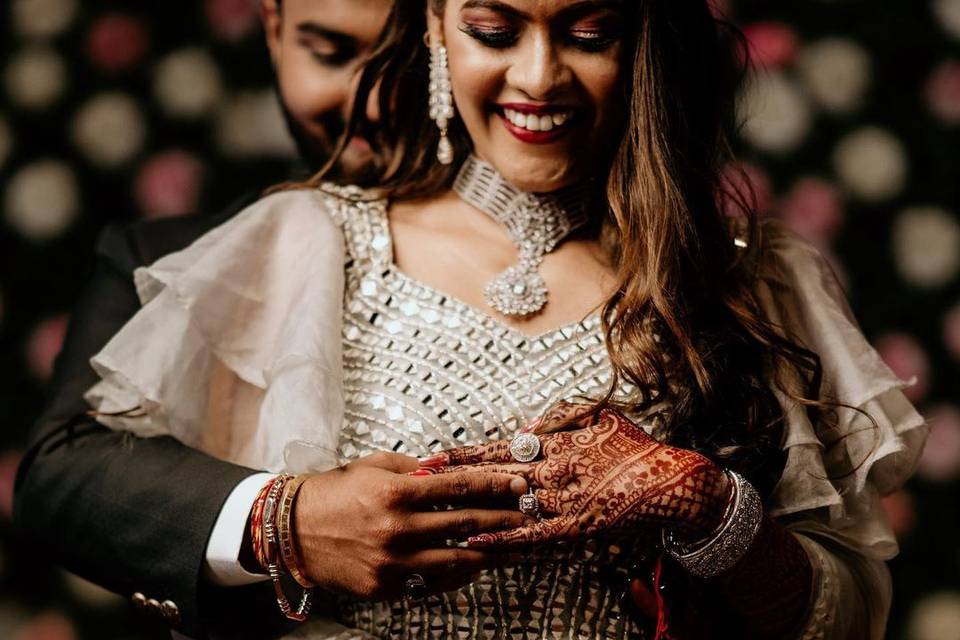Decoding Gujarati Weddings: All About Gujarati Wedding Ceremony Rituals, Dresses and More
Chandlo Matli, Saanjh Sandhya, and Aeki Beki—a Gujarati wedding is a bouquet of colourful traditions. Take a closer look at all the Gujarati wedding ceremony customs.
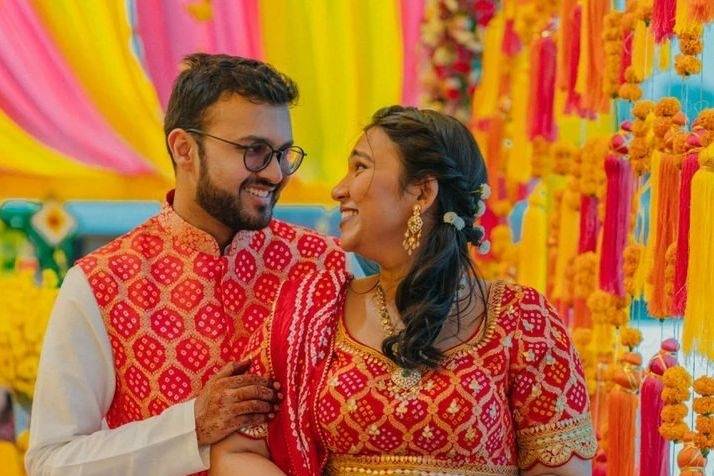
Wedding Photography: Saayh Studio
Dhoti Kurta in vibrant colours with a Bandhni dupatta and Pagdi, gorgeous Chaniya Cholis and Panetar sarees—you know it's a wedding of a Gujarati couple when you see a palette of colours everywhere. Catchy folk music, scrumptious vegetarian dishes, and a whole lot of rites and rituals, along with fun wedding games, make a Gujarati wedding ceremony truly memorable.
From pre-wedding rituals like Chandlo Vidhi to post-wedding functions like Chero Pakadeo, you will never have a dull moment when you're attending a traditional Gujarati wedding. Intrigued to know more? Let's walk you through all that goes on at a Gujarati wedding from day 1 till the end!
In this article:
- Pre-wedding Gujarati rituals
- Gujarati Wedding Ceremony rituals
- Post-wedding Gujarati rituals
- Significance of Gujarati Wedding Dress
Pre-wedding Gujarati rituals
Wedding Photography: Bhavik Chauhan
Right before the wedding, there are a series of pre-wedding rituals followed in a typical Gujarati wedding. Take a look:
Chandlo Vidhi
Chandlo in Gujarati is a red vermillion Tika and Matli mean money. According to the Chandlo Matli custom, the groom and four of his male family members visit the bride's house. The bride's father applies the red Chandlo to his forehead, gifts him token money, and blesses him. On this occasion, the wedding date is also fixed among the two families.
Gol Dhana
Gold Dhana means coriander seeds and jaggery. In a Gujarati wedding, gold dhana represents a sagai, or Engagement ceremony. The bride and her family arrive at the groom's house with sweets and gifts. The couple then exchanges simple engagement rings and seeks blessings from five married women from each family. A homely feast is arranged with all kinds of traditional Gujarati food items and both families celebrate the first official milestone of the wedding ceremonies.
Ganesh Sthapna or Ganesh Matli
The worship of Lord Ganesha heralds the start of a Gujarati wedding, just like it does for most Hindu weddings and other customs. Ganesh Matli, or Ganesh Sthapan, is performed at both houses of the bride and groom separately. The idea behind a Ganesh Puja is to seek blessings for an obstacle-free wedding and the couple's prosperous married life.
Griha Shanti
Right after the Mandap Mahurat is performed, the pandits from both houses perform another puja, addressing all planets and stars. In a Gujarati wedding, a Griha Shanti Puja is an absolute must to ensure a happy and peaceful marital life for the couple. This puja is basically to avoid any kind of astrological or planetary hurdles that might appear.
Mehndi
Two days before the wedding, the Mehndi ceremony is held at the bride's house. All the women in the family and the bride's sisters, cousins, and friends assemble and apply Mehndi to their palms. The bride's hands and feet are adorned with gorgeous mehndi designs and all the ladies sing and dance to folk songs or Mehndi songs.
Sanjhi or Sangeet Sandhya
Sanji is a fun-filled musical evening that almost eagerly awaits a Gujarati wedding! On a Sangeet Sandhya or a Sangeet ceremony both families get together, sing folk songs, and perform Dandiya and Garba dances with full fervour! A sanji is the first occasion where both families get the opportunity to get to know each other and break the ice through music and dancing.
Mandap Mahurat
On a Mandap Mahurat, also known as Mangal Mahurat, both families seek blessings from Mother Earth at their respective homes. They worship the piece of land where they would later create the wedding mandap and ask Mother Earth's permission to carry out the ritual.
Pithi
Just a day before the wedding, a pithi, or Haldi ceremony is performed in a Gujarati wedding at both the bride's and groom's houses, separately. The bride/groom is seated on a low seat called a bajat, and a paste of turmeric, sandalwood, rosewater, and herbs is applied to their faces and palms. The pithi is traditionally prepared by the bride/groom's paternal uncle's wife (Kaki). Once the pithi is applied, the bride/groom is given a holy bath.
Mosalu and Mameru
Mameru/Mosalu in a Gujarati wedding is a tradition quite similar to a Mahira Dastoor in a Marwari wedding. The bride's maternal uncle (Mama) and her maternal aunt's husband (Mousa) visit the bride's home a day before the wedding. As per the custom, Mama and Mousa gift the bride with a traditional Panetar saree, jewellery, ivory or white chura, sweets, dry fruits, and so on, wrapped beautifully in grand trousseau trays.
Top Wedding Photographers from Gujarat
Gujarati Wedding Ceremony Rituals
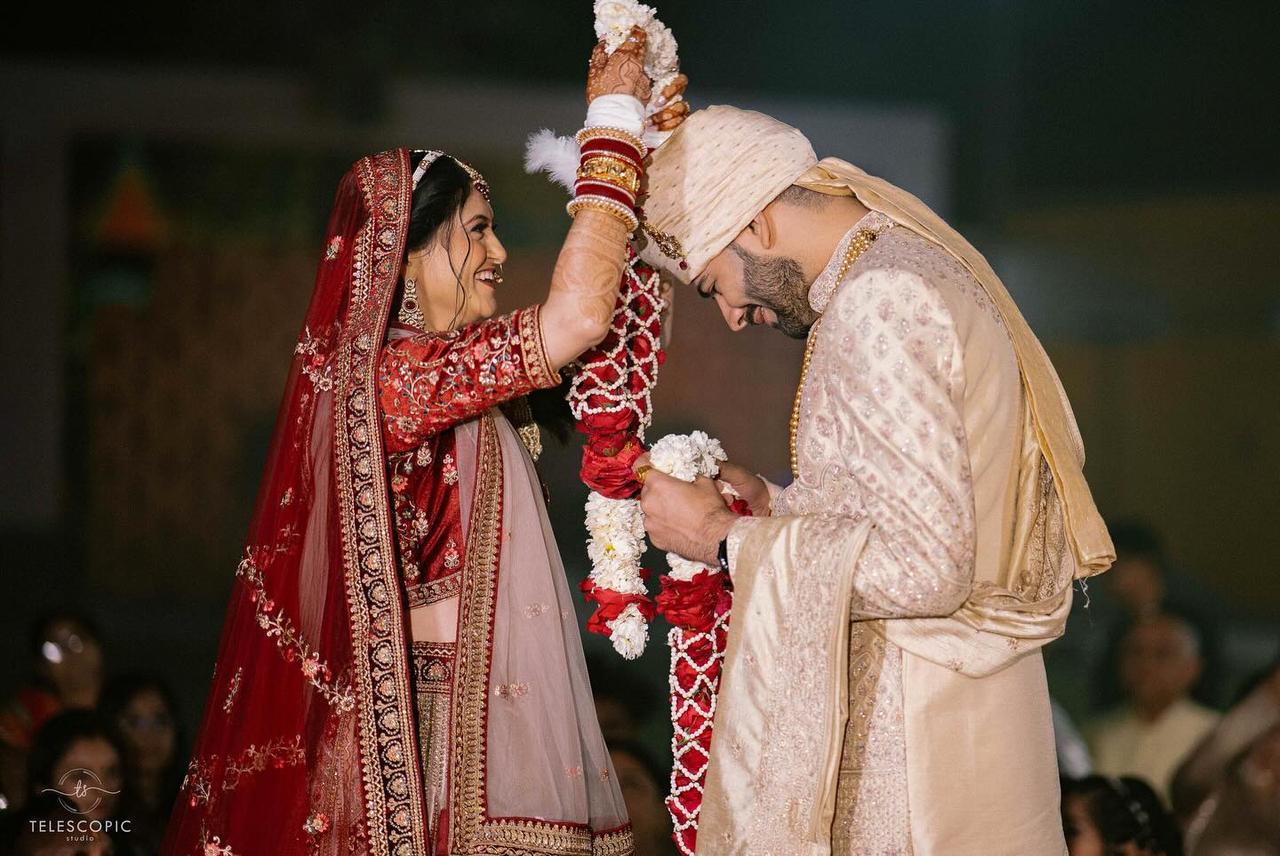
Wedding Photography: Telescopic Studio
Now let's take a look at the Gujarati wedding ceremony rituals that are carried out on the wedding day:
Varghodo
Varghodo in a Gujarati wedding involves a series of rituals right before the groom proceeds to the wedding venue. The family priest hands a bowl of coins wrapped in a cloth to the groom's sister, which she moves around the groom's head a couple of times. The coin sounds are supposed to ward off evil spirits. The groom's sister performs this ritual also to remind her brother that even though he's getting married, he should not forget his sister! After this, the groom and the whole family set out in a procession, singing and dancing to the venue.
Jaan/Agaman
As the groom, riding on a gracefully decorated mare arrives at the wedding venue along with his family, the Jaan ritual is performed for their welcome. A Jaan or Agaman ceremony is performed, particularly to welcome the groom's family with sweets and Aarti.
Ponknu
Ponkhnu is a fun tradition at a Gujarati wedding. It represents welcoming the groom to the wedding mandap. The bride's mother performs Aarti, feeds him sweets, and blesses him before he enters the mandap. However, after that, she attempts to pull the groom's nose in jest to remind him to be humble as he's here to ask their daughter's hand! The groom, in return, tries to escape the nose-pulling. This eventually becomes quite a playful tradition, and everyone has a good laugh.
Jaimala Ceremony
When both the bride and the groom arrive at the wedding mandap, it's time for the Jaimala ritual. The couple exchanges floral garlands with each other. There are sometimes Jaimala songs that are played in the background, and everyone cheers.
Madhuparka
The next ritual in a Gujarati wedding is called Madhuparka, when the bride's mother leads the groom to the mandap and washes his feet with milk and water. She then offers the groom Panchamrut, which consists of milk, yoghurt, sugar, ghee, and honey. All this while, the bride's sisters scheme and implement the whole joota chhupai ritual.
Antarpaat
Antarpat is a cloth that's drawn between the bride and the groom once the bride enters the mandap. This ritual in a Gujarati wedding is carried out to prevent the couple from seeing each other's faces.
Kanyadaan
Like in most Hindu weddings, a Gujarati wedding too follows a Kanyadaan tradition where the father of the bride gives away his daughter to the groom. He first washes the groom's feet and, with folded hands, asks him to take care of his daughter, entrusting her responsibility to the groom.
Hasta Milap
The wedding priest ties the holy knot by joining the groom's shawl and the bride's saree, symbolizing the unification of two souls. He also places both hands together and chants holy mantras. All family members and relatives bless the couple by throwing rice grains and rose petals on them.
Mangal Pheras
During Mangal Pheras, the couple takes four circles around the holy fire while chanting mantras depicting oaths to be with each other throughout their lives. The four pheras each signify "Dharma," "Artha," "Kama," and "Moksha," respectively, and are the four pillars of a happy married life. After every round, the brother of the bride hands them puffed rice to be offered to the sacred fire (similar to Khoi fela in a Bengali wedding).
Saptapadi
The Saptapadi ritual is one of the most crucial ones in a Gujarati wedding, just like any other Hindu wedding. The bride and the groom now take seven steps together while taking seven vows of holy matrimony. The seven vows include the promises to love, respect, take care of each other, plan a family, and be eternally together.
Sindoor daan, Mangalsutra & Kansar
The final three steps in a Gujarati wedding are as follows: First, the groom applies vermillion (sindoor) to the bride's hair mid-parting. This marks the bride's first symbol as a married woman. He then ties the holy Mangalsutra around the bride's neck. Finally, the newly married couple feeds sweets to each other, which is known as the Kansar at the end of the wedding ceremony.
The wedding ceremony comes to an end with the newlyweds touching their elder's feet and seeking their blessings.
Upto 30% off on Vendor Bookings
Post-wedding Gujarati rituals
Wedding Photography: Wedding Candid
The post-wedding rituals at a Gujarati wedding are mostly simple and similar to many other Indian wedding traditions. Read on to learn more:
Saubhagyavati Bhava
Seven married women are invited to bless the just-married couple. When the couple seeks their blessings, each woman utters the phrase "Saubhagyavati Bhava" to the bride, which means "may your marital life flourish with eternal glory.".
Chero Pakaryo
In a rather funny Gujarati wedding ritual, the groom catches the pallu of his mother-in-law's saree and asks for more gifts! Everyone then fills up her saree pallu with cash and gifts, which are later presented to the groom's family.
Aashirvad & Reception
Members from both families bless the couple, and then a reception dinner is thrown in their honour. Everyone is invited and formally congratulates the couple, and everyone enjoys a hearty feast.
Vidaai
After the reception is over, the bride bids farewell to her paternal home in an emotional Vidaai ceremony. She throws rice grains from the back of her head towards the house she's leaving. It's a representation of her paying debts to her family.
Ghar Nu Laxmi
The bride is warmly welcomed into her new home by her mother-in-law. She performs Aarti for the couple and welcomes the bride. The bride is then supposed to enter the house by pushing a grain-filled pot right at the doorstep. This is considered an auspicious custom in a Gujarati wedding and is believed to bring good luck.
Aeki Beki
Aeki Beki is a fun wedding game played by the newlywed couple. A large vessel is filled with milk, vermillion, water, coins, and a gold ring. The couple has to find the ring inside the vessel using only their right hands. The winner in this game receives token money or a gift from the family.
Top Bridal Makeup Artists Near You
Significance of Gujarati Wedding Dress
Wedding Photography: Telescopic Studio
Groom:
A traditional Gujarati groom wears a dhoti and kurta and drapes a colourful tie and dyed bandhani dupatta around his neck. He also wears a matching vibrant Pagdi with stone and pearl embellishments. The groom carries a small dagger called Katar as one of his groom accessories.
Bride:
The bride in a Gujarati wedding drapes a traditional panetar saree in vivid colours with bright red borders. The sarees are usually made of Gajji silk fabric. The unique style of Gujarati saree draping is that the pallu is pleated at the front instead of the back. The sarees are heavily embellished with zari thread work. Another kind of saree used in a Gujarati wedding is a Gharchola saree, which is usually worn in post-wedding traditions. The bride adorns her hands and feet with intricate Gujarati mehndi designs which are especially known for their perfectly symmetrical patterns. She wears an embellished Bindi, Gala nu haar (necklace), Kaan ni Butti (earrings), Kil (Nath or Nathni), Bajubandh or armlets, Kandora (Kamarbandh belt), Rani Haar and Damini (Matha Patti).
Best WeddingWear Stores in Gujarat
A Gujarati wedding is a pure display of vibrant culture and colourful traditions. Although some traditions are now upgraded or changed with time, most of the rituals are still followed. For example, many Gujarati grooms now prefer sporting a designer Sherwani with pyjamas or Indo-western outfits instead of a Dhoti kurta. However, brides mostly prefer to go traditional when it comes to their wedding outfits. Some of the wedding traditions have changed in terms of chronology. Like many couples, they arrange the wedding reception as the final ceremony after the bride reaches her new family. Some brides opt for a Western gown for their reception party. Or, Dandiya and pop music are both included in a celebration of Sanji! Now, if you get invited to a Gujarati wedding, we suggest you learn a few Garba steps to rock that Sangeet Sandhya!
Take a look at some traditional Gujarati hairstyles for brides and bridesmaids!
With Words from Alaknanda Bhattacharya



